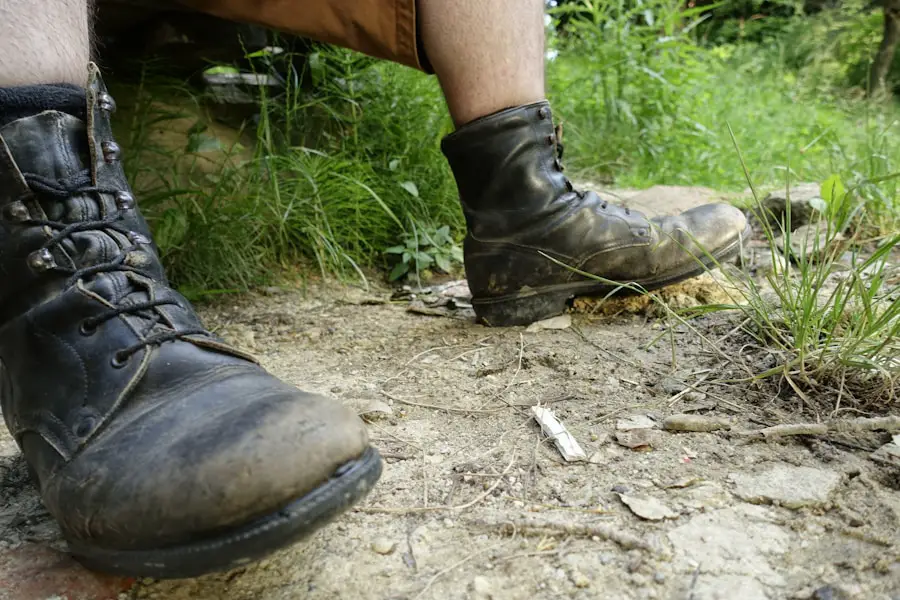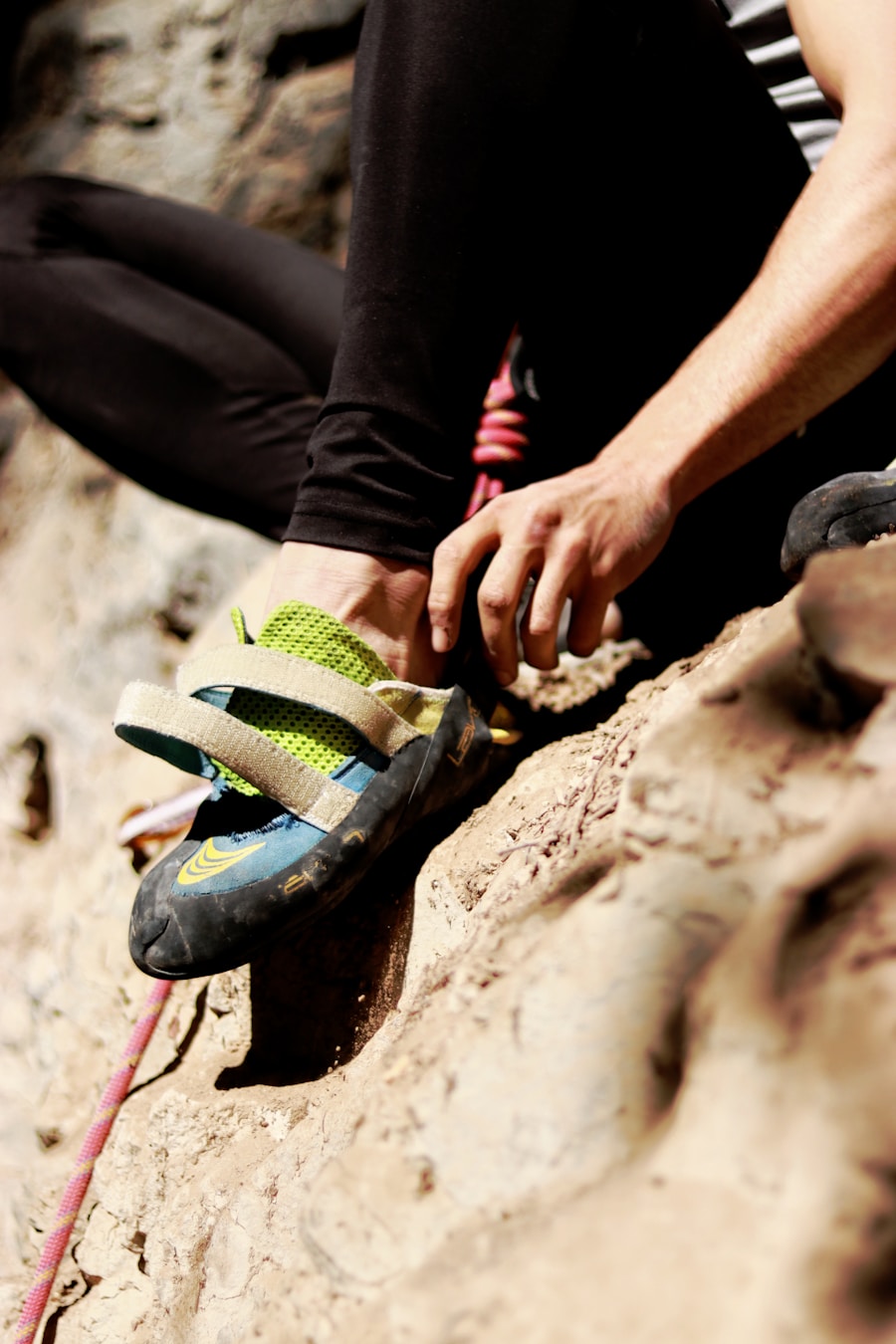Selecting the appropriate footwear is paramount for a successful hiking experience. The right shoes or boots can significantly influence your comfort, stability, and overall enjoyment on the trail. When choosing hiking footwear, consider the terrain you will be traversing.
For instance, if you plan to hike on rocky or uneven surfaces, a sturdy pair of hiking boots with excellent ankle support and a rugged outsole is essential. These features help prevent injuries and provide traction, allowing you to navigate challenging paths with confidence. Conversely, if your hike involves well-maintained trails or flat terrain, lightweight hiking shoes may suffice, offering breathability and comfort without the bulk of heavier boots.
Additionally, it is crucial to ensure that your footwear fits properly. A shoe that is too tight can lead to discomfort and pain, while one that is too loose may cause blisters and instability. When trying on hiking shoes, wear the same type of socks you plan to use on your hike to get an accurate fit.
Pay attention to the toe box; there should be enough room for your toes to wiggle without feeling cramped. A good rule of thumb is to have about a thumb’s width of space between your longest toe and the end of the shoe. This extra space is particularly important when descending hills, as your feet will slide forward in the shoe.
Key Takeaways
- Choose the right footwear that is suitable for hiking and provides proper support and comfort.
- Break in your shoes before hiking to prevent blisters and discomfort during your hike.
- Use moisture-wicking socks to keep your feet dry and prevent blisters from forming.
- Keep your feet dry by changing into dry socks and airing out your shoes during breaks.
- Use blister prevention products such as moleskin or blister pads to protect vulnerable areas on your feet.
Break in Your Shoes Before Hiking
Once you have chosen the right footwear, it is essential to break them in before embarking on a long hike. New shoes can be stiff and may cause discomfort if worn for extended periods without prior acclimatization. To break in your shoes effectively, start by wearing them for short walks around your home or neighborhood.
Gradually increase the duration and intensity of these walks, allowing your feet to adjust to the new footwear. This process not only helps soften the materials but also allows you to identify any potential pressure points or areas that may cause discomfort. In addition to short walks, consider taking your shoes on shorter hikes or nature walks.
This will expose them to various terrains and conditions similar to what you might encounter on your longer hikes. Pay attention to how your feet feel during these outings; if you notice any discomfort or rubbing, make adjustments as needed. Breaking in your shoes can take several days or even weeks, depending on the materials and construction of the footwear.
However, investing this time upfront can save you from painful blisters and sore feet during your actual hiking adventures.
Use Moisture-Wicking Socks

The type of socks you wear can have a significant impact on foot comfort during hikes. Opting for moisture-wicking socks is a smart choice for any hiker. These specialized socks are designed to draw moisture away from your skin, keeping your feet dry and reducing the risk of blisters caused by friction.
Traditional cotton socks tend to retain moisture, leading to dampness that can create an uncomfortable environment for your feet. In contrast, moisture-wicking materials such as merino wool or synthetic blends provide superior breathability and quick-drying properties. When selecting moisture-wicking socks, consider the thickness and cushioning as well.
Thicker socks may offer additional padding and warmth for colder hikes, while thinner options can provide a more snug fit in lightweight shoes during warmer weather. It’s also beneficial to choose socks that have reinforced areas around the heel and toe for added durability. Some brands even offer specific designs tailored for different types of hiking, such as those with extra arch support or compression features.
By investing in high-quality moisture-wicking socks, you can enhance your overall hiking experience and keep your feet feeling fresh throughout your journey.
Keep Your Feet Dry
| Metrics | Data |
|---|---|
| Number of Waterproof Shoes Sold | 5,000 |
| Percentage of Customers Satisfied with Waterproofing | 85% |
| Number of Returns Due to Water Damage | 100 |
| Percentage of Increase in Sales After Waterproofing Campaign | 20% |
Maintaining dry feet is crucial for preventing blisters and ensuring comfort while hiking. Even with moisture-wicking socks, external factors such as rain, stream crossings, or sweat can lead to dampness. To combat this issue, consider using waterproof footwear or applying water-resistant treatments to your shoes.
Many hiking boots come with built-in waterproof membranes that keep moisture out while allowing breathability. If your shoes lack this feature, applying a waterproof spray can help protect them from wet conditions. In addition to waterproofing your footwear, it’s essential to monitor your feet throughout the hike.
Take breaks periodically to check for any signs of moisture accumulation or discomfort. If you notice that your feet are becoming damp, take a moment to remove your shoes and socks, allowing them to air out. This practice not only helps keep your feet dry but also gives you an opportunity to assess any potential issues before they escalate into more significant problems like blisters or fungal infections.
Use Blister Prevention Products
Despite taking precautions, blisters can still occur during hikes due to friction and moisture buildup. To minimize this risk, consider using blister prevention products designed specifically for outdoor activities. One popular option is blister pads or moleskin, which can be applied directly to areas prone to friction before you even start your hike.
These products create a protective barrier between your skin and the shoe, reducing the likelihood of blisters forming. Another effective strategy is to use anti-chafing balms or creams on areas where friction is likely to occur, such as between the toes or along the heels. These products create a smooth surface that reduces friction and helps keep skin hydrated.
Additionally, some hikers find success with specialized blister prevention tape that adheres directly to the skin and provides cushioning against pressure points. By incorporating these products into your hiking routine, you can significantly reduce the chances of developing painful blisters that could hinder your outdoor adventures.
Take Breaks and Air Out Your Feet

Taking regular breaks during a hike is not only beneficial for rest but also crucial for foot health. Continuous pressure on your feet can lead to discomfort and fatigue over time. By scheduling breaks every hour or so, you allow your feet to recover from the strain of walking and give them a chance to breathe.
During these breaks, remove your shoes and socks to let air circulate around your feet; this simple act can help prevent moisture buildup and reduce the risk of blisters. While resting, take the opportunity to assess how your feet feel. Check for any signs of redness or irritation that may indicate developing issues.
If you notice any discomfort, consider adjusting how your shoes fit or repositioning any blister prevention products you may have applied earlier. Additionally, elevating your feet during breaks can help reduce swelling and improve circulation, making it easier for you to continue on your hike feeling refreshed.
Properly Trim Your Toenails
An often-overlooked aspect of foot care for hikers is maintaining properly trimmed toenails. Long or uneven toenails can lead to discomfort inside hiking shoes, especially during descents when your toes may press against the front of the shoe. To prevent this issue, make it a habit to trim your toenails regularly before embarking on any hiking trips.
Use nail clippers designed for toenails and cut straight across rather than rounding the edges; this helps prevent ingrown toenails that can become painful over time. When trimming your toenails, aim for a length that allows for some space between the tip of the toe and the end of the nail—about 1/8 inch is generally recommended. This small adjustment can make a significant difference in comfort during long hikes where foot movement is constant.
Additionally, consider filing any sharp edges after cutting to avoid snagging on socks or causing irritation inside your shoes.
Listen to Your Body and Rest When Needed
One of the most critical aspects of enjoying a successful hike is listening to your body’s signals and knowing when it’s time to rest. Fatigue can set in quickly when traversing challenging terrain or covering long distances, leading to decreased focus and increased risk of injury. If you start feeling pain in your feet or legs, don’t hesitate to take a break; pushing through discomfort can lead to more severe issues down the line.
Pay attention not only to physical sensations but also to mental fatigue. Hiking requires concentration and awareness of your surroundings; if you find yourself becoming distracted or less alert, it may be time for a longer rest period. Use these moments not just for recovery but also for reflection on what you’ve accomplished so far on the trail.
By respecting your body’s limits and taking breaks when necessary, you’ll enhance both your safety and enjoyment during outdoor adventures. Incorporating these practices into your hiking routine will not only improve foot health but also contribute significantly to an enjoyable outdoor experience overall. Whether you’re an experienced hiker or just starting out, prioritizing foot care will help ensure that every step taken on the trail is a step toward adventure rather than discomfort.
If you’re planning a hiking trip and want to prevent blisters, one helpful article to check out is 3 Portable Phone Chargers You Need for Your Next Getaway. This article provides tips on how to keep your devices charged while on the go, which can be essential for staying connected and safe during your outdoor adventures.
Love travel? Join Our Facebook Community For More Tips.
FAQs
What are blisters and why do they occur during hiking?
Blisters are small pockets of fluid that form on the outer layers of the skin. They occur during hiking due to friction, pressure, or irritation on the skin, often caused by ill-fitting footwear, moisture, or repetitive motion.
How can I prevent blisters while hiking?
To prevent blisters while hiking, it is important to wear properly fitting, moisture-wicking socks and well-fitting, broken-in hiking boots. Additionally, using blister prevention products such as moleskin, blister pads, or lubricants can help reduce friction and protect vulnerable areas of the feet.
Are there any specific techniques for preventing blisters on the trail?
Some specific techniques for preventing blisters on the trail include keeping feet clean and dry, using hiking poles to reduce strain on the feet, and taking regular breaks to air out and rest the feet. It is also important to address any hot spots or discomfort as soon as they arise to prevent them from developing into blisters.
What should I do if I feel a blister forming while hiking?
If you feel a blister forming while hiking, it is important to address it immediately. Stop and assess the area, then apply a blister prevention product such as moleskin or a blister pad to reduce friction. If the blister has already formed, it is best to clean the area, apply a blister pad, and avoid popping the blister to prevent infection.
Are there any other factors that can contribute to blister formation during hiking?
In addition to friction and pressure, other factors that can contribute to blister formation during hiking include wearing wet or damp socks, not properly breaking in new footwear, and not addressing any foot issues such as calluses or bunions before hitting the trail. It is important to address these factors to prevent blisters from forming.
